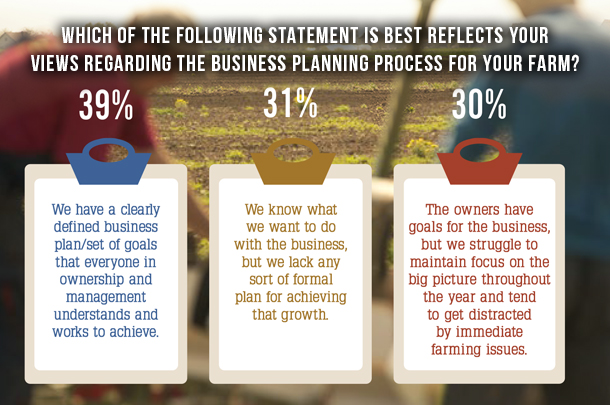In particular, population growth coupled with rising incomes in developing countries is increasing the demand for high-quality animal protein. According to the Food and Agriculture Organization of the United Nations, “the total demand for animal products in developing countries is expected to more than double by 2030.” As the livestock industry is already the world’s largest user of land, one of the many challenges facing this industry will continue to be sustainable stewardship of the land while increasing productivity and gaining operational efficiencies in the face of rising production costs and high demand.
Keeping Your Operation on the Right Path
Farming is a complicated business and involves complex planning and decision making to keep an operation running. This increase in demand on agriculture for food production will only serve to correspondingly increase the demand on farmers and ranchers to make more strategic decisions and run their operations more efficiently to meet it.
With so much change occurring on and around the farms and ranches of our nation from the advent of new technologies and new markets opening up to uncertain weather and economic concerns, is the decision making process for our farmers and ranchers changing as well? Recently, AgAmerica Lending surveyed more than 330 farmers across the United States to find out.
As the nation’s premier agricultural land lender, naturally our focus was on decision making for the financial aspects of running a modern farming or ranching operation. We will highlight some key takeaways in this article, but be sure to check out our full whitepaper, Decision-Making Success: Making Smart Financial Management Decisions for Your Farm.
Research
When farmers conduct research for their operation’s financial decisions, they generally involve multiple people inside and outside the business. Just over one-third of the respondents said the farm owners conduct research by themselves. Others, 22.7%, said that the owners limit the research to key members of the business. For those farms engaging people outside the business, 76% sought input from current business relationships like attorneys, accountants, and bankers.
Of the eight steps involved in effective decision making, three threaten to hinder farmers’ decision-making process the most: setting goals, considering alternatives, and recognizing the problem. Florida A&M researchers identified eight primary steps for effective decision making which include setting goals, recognizing the problem, obtaining information, considering alternatives, making the decision, taking action, accepting responsibility, and evaluating the decision. These same three challenges were most prevalent regardless of how the respondent audience was segmented (family and non-family farms, large and small operations).

Business Plans
Farmers strongly believe in the value of a business plan. As the decisions farmers and ranchers have to make get more difficult, it’s no surprise that more than 83% of respondents agreed having a clearly defined business plan outlining their goals and plans to achieve them will help those goals become a reality.
Unfortunately, believing in the value of a business plan does not guarantee an operation will have one. The respondents were fairly equally distributed across three groups: farms that have a clearly defined business plan, farms that have long-term goals for the operation but not a formal business plan, and farms that get bogged down by the day-to-day challenges of running the operation.
For family operations, multiple generations are involved in the business planning process. More than half of the respondents reported that the older and younger generations are equally involved in the planning process compared to one-third who said the older generation solely drove the planning process for their operation.
Decision Making
Farming operations generally fall into one of two categories: Farms where key decisions are made solely by the owner/leader of the farm; or, Farms where key decisions are made jointly by ownership and top management. Of those responding, 39% fell under the first category and 35% in the second.
Female operators described a much more inclusive decision-making process than male operators. When asked ‘who makes the farm financial management decisions at your operation?’ less than 15% of the women surveyed said the decision was made by one person, compared to 43% of male respondents who said this.
Younger farmers consider decision making a joint effort between ownership and top management. Of the respondents who were 44 years of age or younger, 53% fell under this category. This contrasts sharply with the respondents who aren’t part of a family farm, where more than 60% said key decisions are made solely by ownership.
Regardless of who makes the decisions at your operation, they have to be made and the importance of good financial management does not change. As the demand for strategically run agricultural operations increases, and you look to improve or expand your operation, AgAmerica Lending can be your long-term partner in achieving and maintaining the financial health of your operation.
In developing our customized loan packages, we use a thorough, data-driven approach with a focus on the future. We strive to provide our clients with unique options for manageable, responsible debt and will work closely with you to analyze your operational goals and financial needs and provide financing solutions tailored to your operation.
Let our team with over 200 years of agriculture experience and extensive knowledge in finance and economics, real estate, and financing strategies be your resource for help in realizing your operation’s full potential. Contact us today to learn more about our unique loan programs. ![]()








